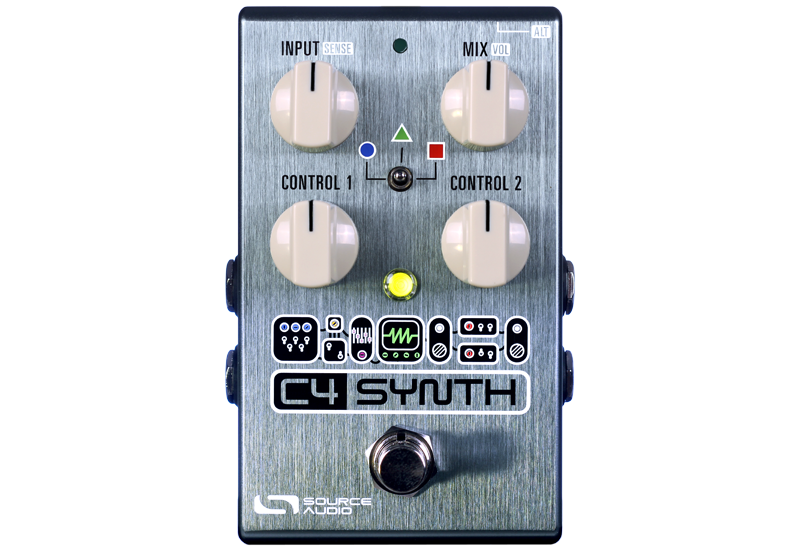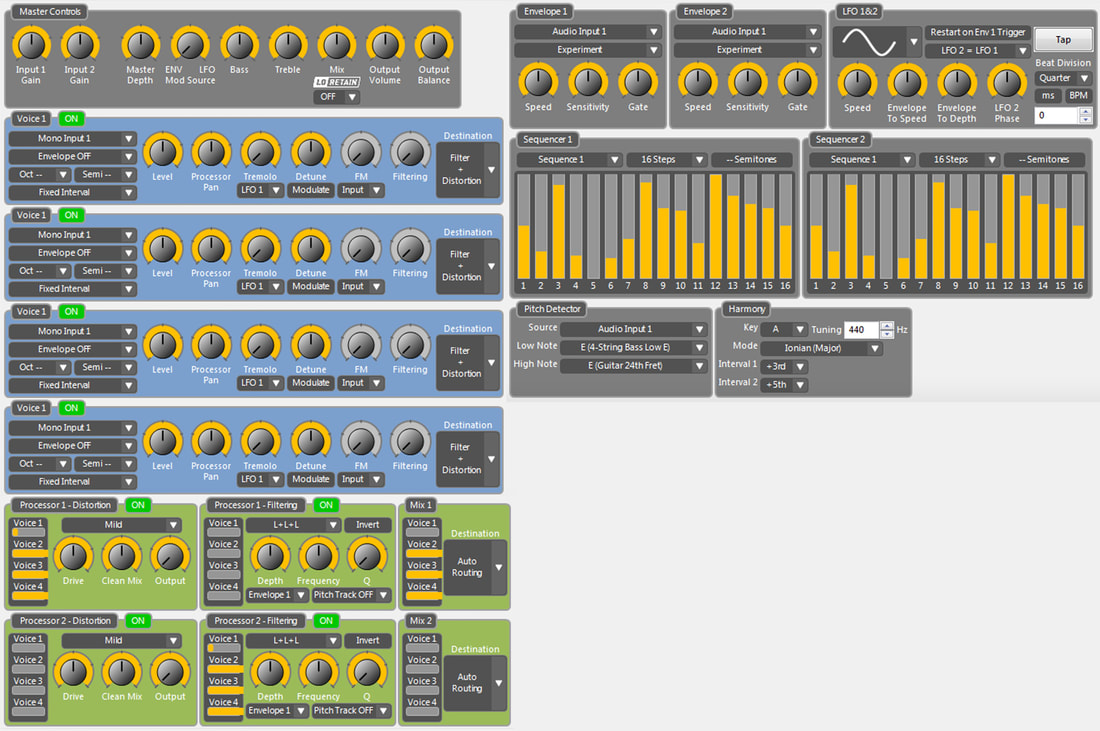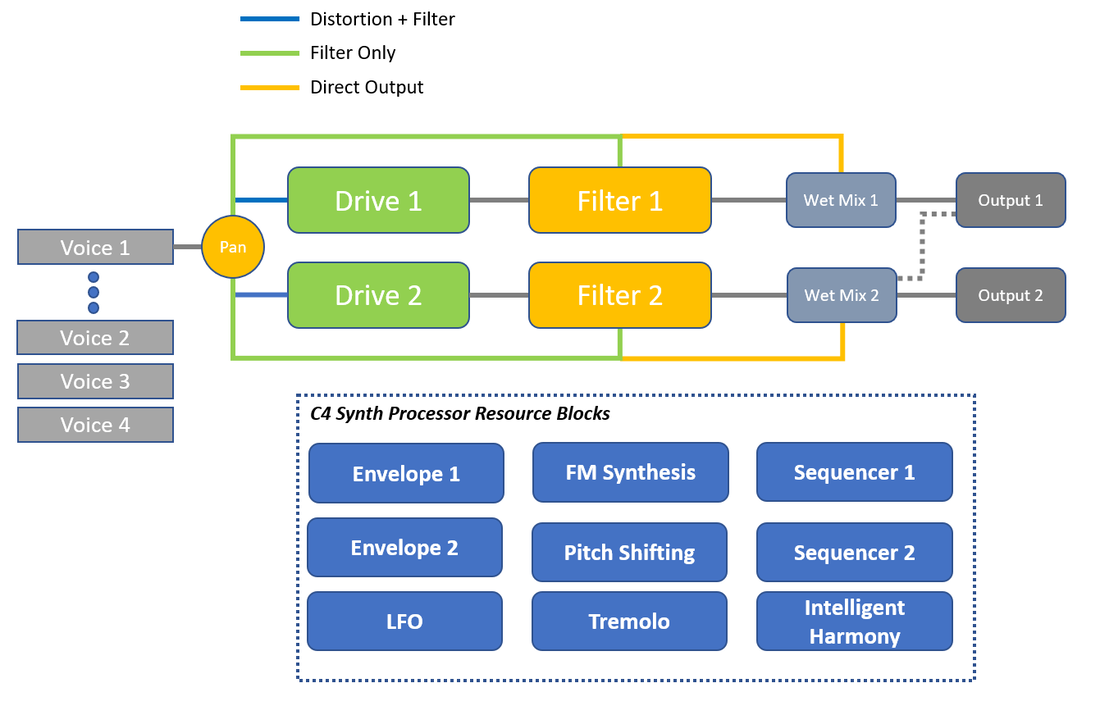Instruments, Product News
SOURCE AUDIO WHAT ARE THEY BUILDING IN THERE?
SOURCE AUDIO WHAT ARE THEY BUILDING IN THERE?
The C4 Synth from Source Audio
The first thing we need to do is explain the big idea behind our latest project. Bob Chidlaw (Source Audio’s Chief Sound Engineer), feeling inspired by his personal Eurorack modular synth rig, set out to built a powerful synthesizer machine, specifically designed to live inside the compact structure of a Source Audio One Series housing. The C4 is, for all intents and purposes, a modular synthesizer in an box.
On the surface, the C4 features a simple 4-knob interface and a choice of three guitar/bass synthesizer effects – just plug-in and submerge your instrument in a sea of swelling, buzzing, and swirling synth tones. If you want to take things to take things a bit further, we urge that you connect the C4 to our Neuro Desktop Editor (a free download for Mac and Windows) or Neuro Mobile App (a free download for iOS and Android). Inside the Neuro Editors you will find the tools to personally create your own retro-futuristic synthesizer tones. Use the C4’s collection of four parallel voices, three oscillator wave shapes, ten-plus envelope followers, twenty-plus modulating filters, distortion, tremolo, pitch shifting, intelligent harmonization, programmable sequencing and more to dial in that perfect tone. Find it all, from the classic synth tones you’ve always wanted to replicate to those illusive abstracts you’ve imagined, but never actually heard. If you’re short on time and/or patience, it’s very easy to find tons of great sounds – simply call up an effect from countless presets created by the Source Audio team or the growing legion of C4 users.
We at Source Audio are out of our minds with anticipation for the release of the C4 Synth – we cannot wait to hear the sounds y’all come up with for our exciting new pedal.
Sound Samples
The C4 Synth’s Control Panel in the Neuro Desktop Editor
The true power of the C4 Synth resides in its Neuro Desktop or Mobile Editing interface. Source Audio President Roger Smith said in a recent interview, ” When we create our own library of sounds, we put them out, and they have a certain level of popularity. But it has been far more interesting to tap into the world of hobbyists interested in creating their own sounds with our Neuro Desktop Editor. They create presets and publish them into a communal sharing space where others can use and further edit them. Creating this kind of collaborative world is ultimately the kind of direction we’re heading.”
With the Neuro Editor it will be possible to create highly customized presets for your C4 Synth. Presets can then be published and made available to the entire Neuro community. The illustration below shows the current state of the C4’s Neuro Desktop Editor. You will see that it is possible to edit each to the C4’a four voices, including things like Oscillator Wave Shapes, Envelope Types, Filters, Distortion, FM Synthesis, Pitch Shifting, Harmonization, Sequencing, and much more. We cannot wait to hear the sounds created by the ever-growing base of Source Audio pedal owners.
The C4 Block Diagram
There are four Voice Blocks. Within each Voice Block select from any of the following Voice Types: Dry Signal, Monophonic Pitch Shifting, Polyphonic Pitch Shifting, and three types of Synth Oscillator Wave Shapes (including Sine, Square, and Saw). In these blocks you will also be able to select voice level, stereo panning, distortion/fuzz engage, filter engage, pitch modulation, and detuning amount.
Choose a type of distortion from a long list of Source Audio favorites, including Soft Clipping, Foldback, and Gated Fuzz. Dial in the Drive amount and Clean/Dirty Mix.
Choose from over 20 different filter types. Decide whether you want to control the filter modulation with an envelope follower or LFO and set the LFO Speed. Dedicated controls allow you to set the Envelope Sensitivity, Filter Modulation Depth, Frequency Starting Point, and Q Level (a.k.a. “Resonance’).
Guitar
COMPUTER MUSIC









